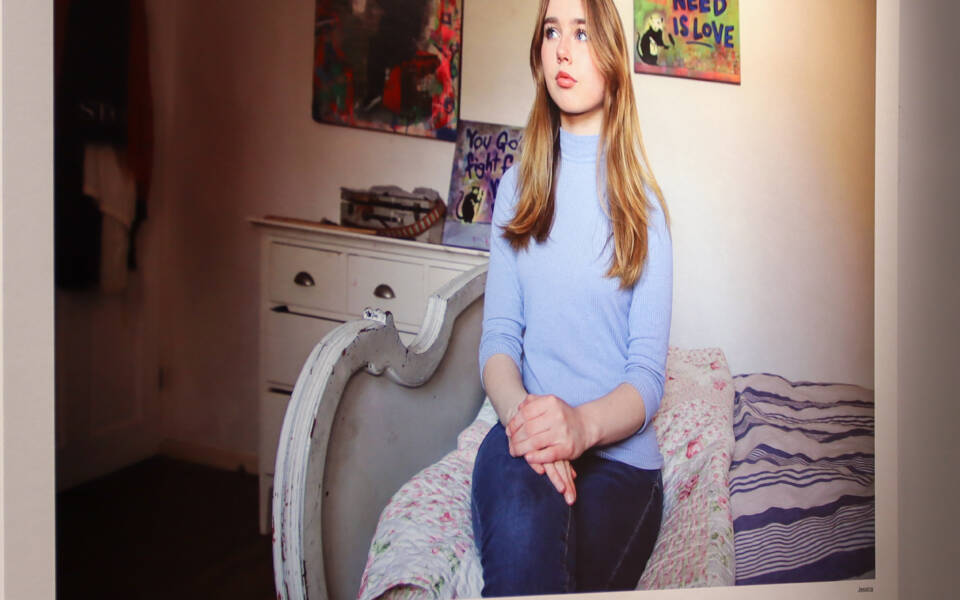Case Study
Farnham Maltings
Farnham Maltings was funded to support communities in Buckinghamshire to host their own cultural projects and increase local access to creative activity.
“I have lived in Amersham for so long and don’t recall there ever being a creative project that people could participate in, as a community. I am really pleased you are doing this.” Sri-Kartini Leet, photographer – Amersham Roots
In 2019, the Rothschild Foundation started working with Farnham Maltings to support communities in Buckinghamshire to host their own cultural projects and increase local access to creative activity. As part of our strategic priority to overcome some of the geographic and social barriers to seeing and participating in the arts, the project included three artist in residencies in community settings.
One took place in Amersham Museum, which explores life in the town and works with local residents to add their memories, documents and stories into its collection. While the museum has a rich tapestry of donations and oral histories from older residents, they had very few from anyone born since the museum first opened in 1991. Buckinghamshire artist Sri-Kartini Leet was commissioned to lead a creative project specifically aimed at engaging young adults aged 16-30 and presented Amersham Roots: Locating Memory, Place and Meaning.
Sri-Kartini photographed 30 young people in spaces that they chose and signified aspects of their identities. Of these, 9 returned to Sri-Kartini an image which they had taken that denotes a particular memory, place or event in or around Amersham. This created a dialogue for the participants to express what was meaningful to them, giving them the opportunity to narrate the context and story behind their choices.
I didn’t realise how difficult it would be for me to choose a photograph for the project. I have lived here all my life and it has made me stop to think what is most important to me personally

Two photography workshops also took place in Amersham. Using the What3Words app participants were provided with walking routes and a guide to photographing their surroundings using their phone camera. They were shown how to use filters and editing tools to frame and compose their shots, developing their own photography skills. Those who wished, could add their images to the exhibition and the museum’s collection.
All the images and portraits were exhibited at the museum. Originally due to run for 3 weeks, such was the quality and response the museum asked to keep the exhibition up until September 2022.
The project was not without its challenges, engaging young adults was really hard. In a generation that has grown up with social media, there was perhaps surprising reluctance for their image to be on public display. But through persistence, word of mouth, leaflet distribution and partnerships, including one with older students at Stony Dean SEN School, local participants were found from a diverse range of backgrounds.
Thanks for the opportunity to participate in this amazing project. I never thought I would be any good at photography and this workshop made me almost obsessive about taking pictures and using the app.

For the artist this was a chance to reinforce and develop her practise in participatory project work and the ways in which the photograph features centrally in conceptions and shaping of identities and heritage.
“The voices of members of a community are important to my approach, and in addition to the contribution of individual images that were significant to them, I was pleased to be able to deliver two practical workshops to engage young adults in creative expression. Just as I do not believe in a single, unifying truth, the perspectives of many in the depiction of Amersham is what created the richness in the final exhibition.”
For Amersham Museum, the collaboration actively increased local engagement with and awareness of their building and their work. Participants and their friends and families were invited to the exhibition opening and to explore the entire museum and for many this was their first visit with one commenting that they had walked past its doors every day for many years but not stepped inside before. It was not just the Museum benefitting from an increased footfall, visitors to the space found their trip to be an enriching one.
“The portraits are transformative for the museum – I’m so pleased we have them over the summer, giving a face and a voice to young people.” Emily Toettcher, Amersham Museum Director

By displaying work throughout the museum – on stairwells, lift doors and windows, as well in the exhibition space, Sri-Kartini also challenged the museum to think how it might display work going forward. The perceptions of a museum as a place for ‘old’ artefacts was subverted with modern photography techniques and young faces. When the exhibition closes a copy of all the photographs – both portraits and accompanying images, will be added to the museum’s collection where they will sit alongside photographs of the town and its residents taken by George Ward a century earlier, continuing to build a living record of Amersham and its residents.
